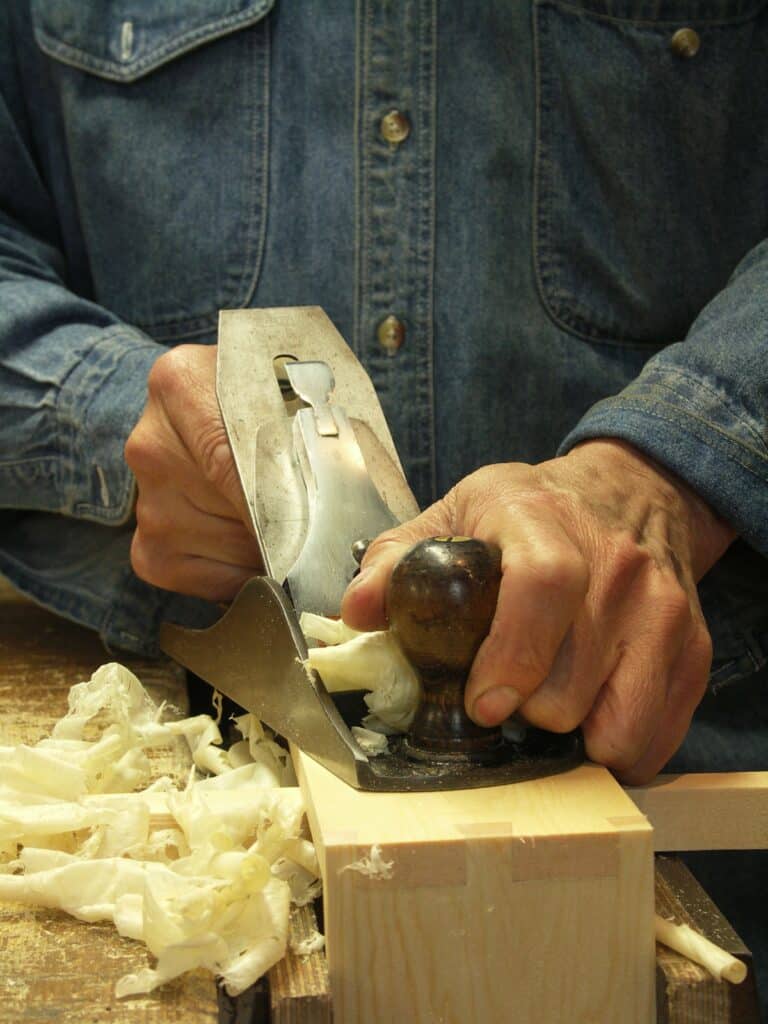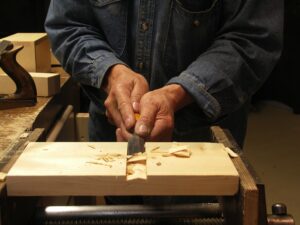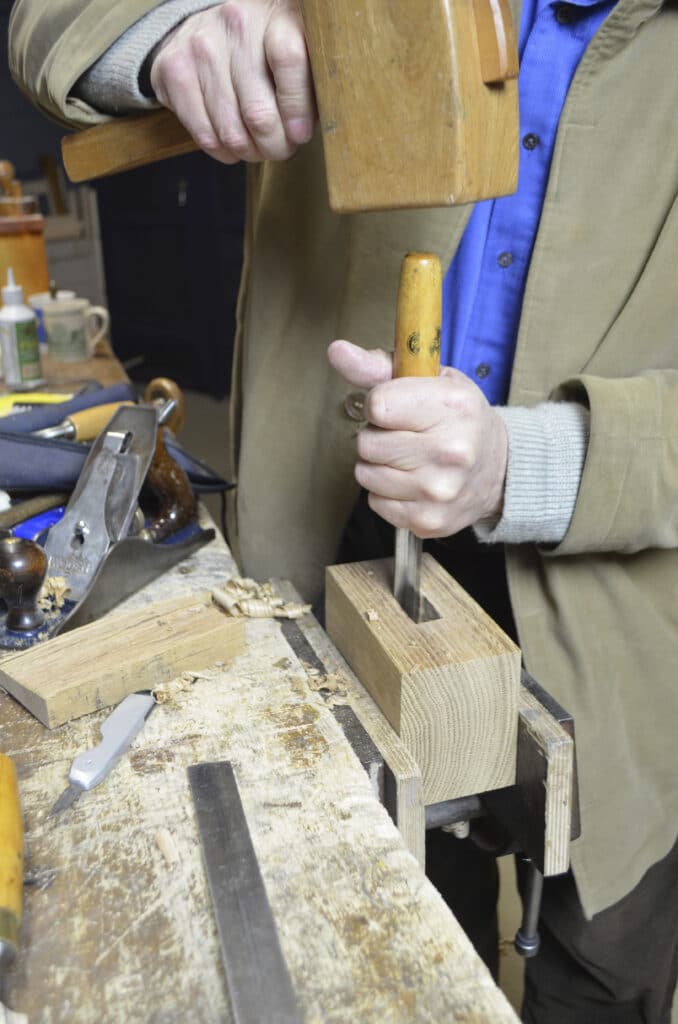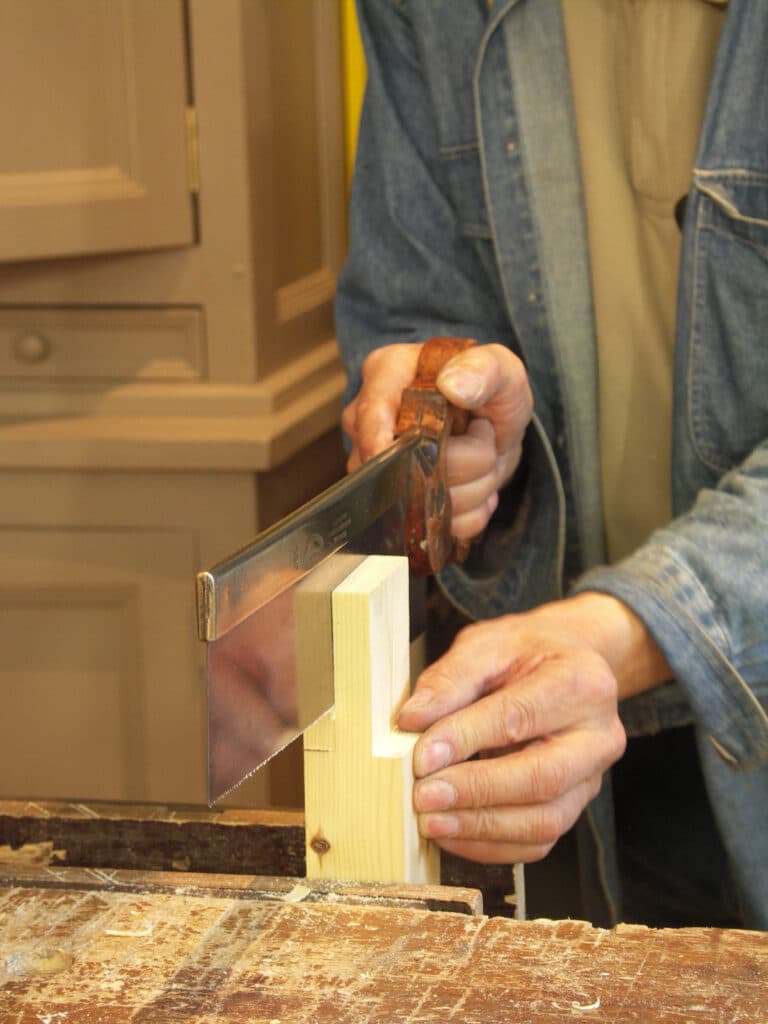The Rhythm of Handwork – A Pace of Life



“The weight of a mallet must be lifted and dropped to the chisel with a quick and rhythmic arm and wrist movement. At around 60 vertical mallet stroke lifts per minute equalling 3,600 strokes in an hour, and with a 2 lb mallet, that’s 7,200 lbs of lifting in an hour ( well over 3 metric tons or both the short or long tons) driven with the exact force to deliver each blow to an inch diameter. A momentum grows and the whole dynamic of shape and size needs to match the craftsman. Here you see the marriage of the mallet to the hand of the man that made the mallet. It’s an until-death-do-us-part marriage you see.”
Saw strokes, hammer blows, planes strokes by the thousands all have rhythm and poser. The neat thing is that I see a joint come together and the wood get smoothed. I see a door trimmed and hinged step by step and when my day is done all of the rhythms come together like a symphony. I live for this.



What you so eloquently describe there Paul is what we amateurs all aspire to. To develop that rhythm uninterrupted by hesitation or nervousness and to have it culminate in the efficient and calm production of something functional and beautiful is what drives many of us I suspect. When we practice and practice we get to see little glimpses of it now and then and it gives us hope and enjoyment of the journey.
I have to agree with you Paul that woodwork is more about the feel of working the wood than just working – wood. It’s about “knowing” just how hard or soft to apply the hammer/mallet blows, the plane strokes, the chisel cuts. This applies not just to woodwork but any other craft work – painting, pottery, sowing the list is endless.
I have a book explaining how to gas weld called “The Art of Welding”. As the author says he can explain the mechanics of welding, but not how to “play the flame” to weld a particular piece of metal to another: that is the “art” that only I can learn for myself.
Hand woodworking is about making shavings & sawdust so that eventually we learn how to make shavings & sawdust.
Pete
I have found it is when I slow down, whether it be at the bench, fishing, or sitting in the hammock, or in traffic – that I find myself more at ease if I allow the rhythms you speak of to almost guide me (like the small, still voice). I try to breathe a little deeper, let go of the things I cannot control (still doesn’t stop me from trying…). And I also agree, we don’t need to understand, but sometimes just need to learn to trust. Thank you for sharing this post. Looking forward to your future works Paul.
Paul thank you for sharing!
Rhythm and Pace!
I was raised in the Appalachian Mountains of North Carolina. My grandfather was a furniture maker and blacksmith. Some of my earliest memories was helping him in the blacksmith shop and listening to the rhythm and ring as the steel yielded to his hammer. The same was true as he chopped mortises. The plane moved across the walnut, chestnut, cherry with a rhythm and pace yealding a smooth surface that he would close his eyes and run his work hardened hands across. It was even true when he was sawing. He watched, but more than that he listened. When you tell people on your videos to listen as the saw comes to the end of the cut or the chisel bottoms out in a mortise hole it reminds me of him. I’m almost the same age as Paul and I grew up in a place where it seemed time had stood still. The sounds of nature, the bark of a hound as he treed a raccoon. The sound of the river as we fished. All of nature has a rhythm and pace. So do we. When we find that rhythm and pace we will find peace and contentment go with it. Thank you Paul for sharing and prompting some wonderful memories to find their way back to my soul. Today I began a piece I am building with my grandson, a toy box, and we are working side by side on a workbench that I have brought back from NC, restored together, that belonged to my grandfather and we are using hand tools handed down from my great grandfather, to my grandfather, and to my dad, then to me and maybe one day to my grandson. Rhythm and Pace.